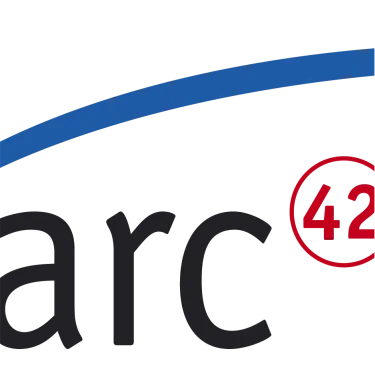Sarbanes-Oxley Act of 2002 (SOX) - Financial Reporting and Internal Controls
The Sarbanes-Oxley Act (SOX) is a U.S. federal law enacted in 2002 that establishes stringent requirements for financial reporting accuracy and internal controls over financial reporting (ICFR). While primarily a business regulation, SOX has profound implications for software systems that process, store, or report financial data.
SOX was enacted following major corporate accounting scandals (Enron, WorldCom, Tyco) to restore investor confidence through enhanced corporate governance, financial transparency, and accountability. For software systems, SOX creates specific technical requirements around data integrity, audit trails, access controls, and change management for financial reporting systems.
Key Sections Impacting Software Systems
The following SOX sections directly influence software system design and quality requirements:
| Section | Requirement | Software System Implications |
|---|---|---|
| Section 302 | CEO/CFO Certification of Financial Reports | Systems must provide accurate, complete financial data with documented controls and audit trails for executive certification. |
| Section 404 | Internal Controls Over Financial Reporting (ICFR) | Mandatory documentation and testing of IT controls that impact financial reporting accuracy and completeness. |
| Section 409 | Real-time Disclosure of Material Changes | Systems must support timely capture and reporting of material events affecting financial position. |
| Section 802 | Document Retention and Destruction | Electronic document management systems must implement proper retention policies and prevent improper destruction. |
| Section 906 | Criminal Penalties for False Certification | Systems must provide reliable data integrity to prevent inadvertent false certifications by executives. |
Quality Attributes Emphasized by SOX
SOX requirements directly translate to specific software quality attributes for financial systems:
| Quality Attribute | Relevance in SOX Compliance |
|---|---|
| Data Integrity | Core requirement for accurate financial data throughout processing, storage, and reporting lifecycle with protection against unauthorized modification. |
| Auditability | Comprehensive audit trails for all financial data changes, user actions, and system activities to support internal and external audits. |
| Accountability | Clear assignment of responsibility for financial data accuracy with documented roles, approvals, and sign-offs in system workflows. |
| Traceability | Complete lineage tracking of financial data from source transactions through consolidation, adjustments, and final reporting. |
| Access Control | Segregation of duties through role-based access controls preventing single individuals from initiating and approving financial transactions. |
| Compliance | Adherence to SOX requirements, GAAP accounting principles, and SEC reporting standards embedded in system design and controls. |
| Security | Protection of financial data against unauthorized access, modification, or disclosure with appropriate encryption and access logging. |
| Reliability | Consistent, dependable operation of financial systems to ensure accurate and timely financial reporting without data loss or corruption. |
| Documentation | Comprehensive documentation of system controls, processes, and procedures to support SOX compliance testing and audits. |
| Change Management | Controlled modification processes for financial systems with proper testing, approval, and documentation of changes. |
Internal Controls Over Financial Reporting (ICFR)
Application Controls
- Input Controls: Data validation, authorization checks, and completeness verification for financial transactions
- Processing Controls: Calculation accuracy, data matching, and exception handling in financial computations
- Output Controls: Report accuracy verification, distribution controls, and reconciliation procedures
IT General Controls (ITGC)
- Access Security: User provisioning, password policies, and privilege management for financial systems
- Program Change Controls: Change management processes for financial application modifications
- Computer Operations: Backup procedures, job scheduling, and system monitoring for financial applications
- System Software: Database management, operating system controls, and infrastructure security
SOX Compliance Framework for Software Systems
Risk Assessment and Scoping
- Identification of financial reporting risks and relevant IT systems and processes
- Documentation of financial statement assertions affected by IT systems
- Assessment of control design effectiveness and implementation testing
Control Design and Implementation
- Preventive Controls: Built-in system controls that prevent errors or fraud before they occur
- Detective Controls: Monitoring and alerting mechanisms that identify issues after they occur
- Corrective Controls: Automated or manual processes to remediate identified control deficiencies
Testing and Monitoring
- Design Testing: Verification that controls are properly designed to address identified risks
- Operating Effectiveness Testing: Confirmation that controls operate effectively throughout the reporting period
- Continuous Monitoring: Ongoing assessment of control effectiveness and deficiency identification
Technology Implementation Considerations
Financial Data Management
- Master data management for chart of accounts, legal entities, and organizational structures
- Data lineage tracking from source systems through consolidation and reporting
- Automated reconciliation processes with exception handling and investigation workflows
- Version control for financial data with approval workflows and audit trails
System Integration and Interfaces
- Automated data flows between financial systems with error handling and retry mechanisms
- Interface monitoring and alerting for failed or incomplete data transfers
- Data transformation controls ensuring accuracy and completeness in system integrations
- Real-time or near-real-time processing capabilities for timely financial reporting
Reporting and Analytics
- Standardized financial reporting templates with embedded calculation controls
- Drill-down capabilities linking summary reports to detailed transaction data
- Variance analysis and exception reporting for management review and investigation
- Dashboard and analytics tools for continuous monitoring of financial performance and risks
References
Official SOX Resources
- Sarbanes-Oxley Act of 2002 (Public Law 107-204) - Full text of the original legislation
- SEC SOX Implementation Rules - Securities and Exchange Commission implementation guidance
